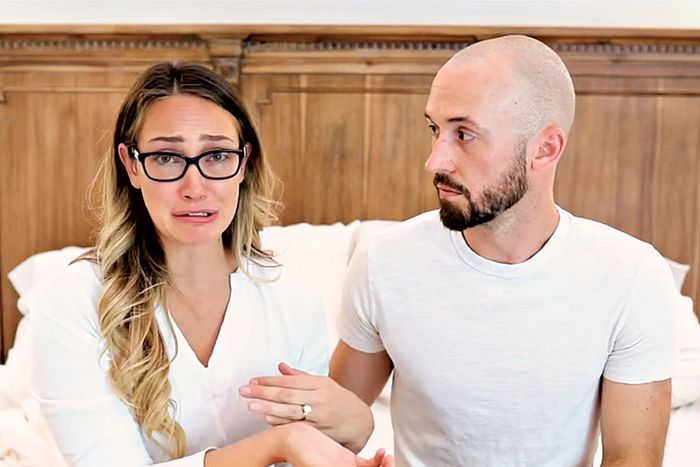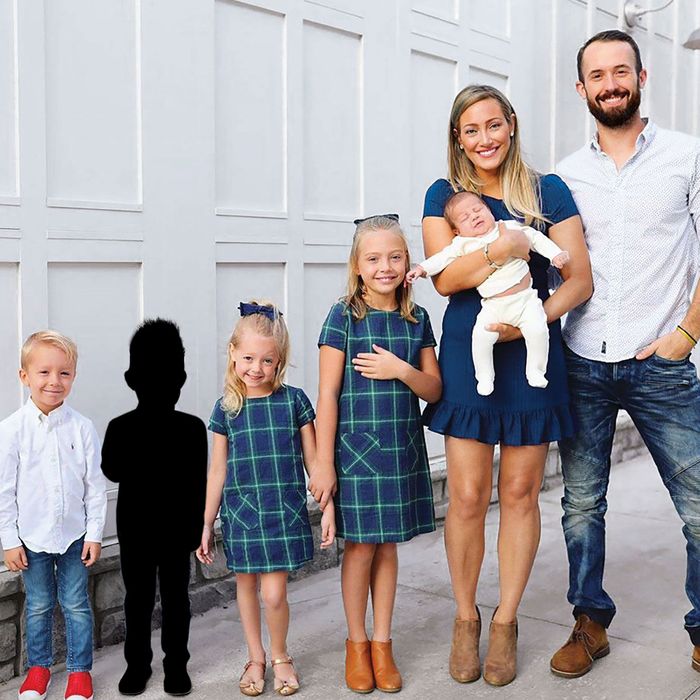
This article was featured in One Great Story, New York’s reading recommendation newsletter. Sign up here to get it nightly.
The video began like so many others. YouTubers Myka and James Stauffer, in the glow of camera-friendly lighting, staring into the lens. But this time, instead of energetically updating their roughly 1 million subscribers (over 700,000 on Myka’s YouTube channel and over 300,000 on the family’s vlog, The Stauffer Life) on their “kiddos” or Myka’s “mommy morning routine” or vegan-meal ideas, the couple had somber expressions. “This is by far the hardest video James and I have ever publicly had to make,” said Myka. Wearing white shirts that matched the linens on the bed where they sat, the Stauffers revealed that they had placed Huxley, their then almost 5-year-old autistic son from China — whose adoption process and life they had documented for more than three years — with “his now new forever family.” Myka and James tearfully explained that the extent of Huxley’s needs had not been clear when they’d adopted him, that it was never supposed to happen this way, and that they loved him.
Some viewers were sympathetic, but the video, which was posted in late May, also fueled outrage. The Stauffers lost thousands of subscribers, and Facebook and Instagram accounts sprung up demanding “Justice for Huxley” and “Cancel Myka & James Stauffer.” Brands that had worked with Myka to promote their products — including Fabletics, Suave, Danimals, and Playtex Baby — distanced themselves. They were even subject to a sheriff’s-office investigation after detractors suggested their other children might be endangered. In the kindest light, Myka, now 33, and James, 35, were painted as well-meaning but naïve parents who had gotten in over their heads; in the harshest, they were fame-hungry narcissists who’d exploited a child for clicks and profit only to discard him when caring for him proved too difficult.
According to the U.S. Department of Health and Human Services, anywhere from one percent to 5 percent of the more than 100,000 adoptions in the U.S. each year are legally terminated in what’s called a “dissolution” — making the Stauffers’ decision to relinquish custody rare but not unheard of. Had they not shared Huxley’s adoption with the world, building an audience from videos about everything from his medical diagnoses to his food anxiety, they would be dealing with a private family tragedy rather than a public scandal. Instead, the Stauffers have been held up as examples of what is wrong with both influencer and adoption culture — and what can happen when a child is caught at the intersection.
Before she was Myka Stauffer, adoption vlogger, she was Myka Bellisari, a nurse and single mother living in Ohio, posting weight-loss videos to her YouTube channel. This was 2012, around the time she met James on OkCupid. After they moved in together in Indianapolis and got pregnant, the couple started The Stauffer Life, where they vlogged about their relationship and growing family. In 2014, they were married, and Myka began a channel using her new last name. With James’s support, she quit nursing; by Myka’s own telling, his job as an engineer paid “at least three times” what she was making. She began selling clothes on eBay while filming for her channels. Eventually, she said, James convinced her to focus on YouTube full time.
Back then, much of their most-viewed content centered on the couple’s quest to get pregnant again. Myka and James, who declined to be interviewed for this story but whose digital footprint spans countless hours of testimonials, showed an early willingness to share deeply personal moments. They were rewarded for it. Clips titled “MY MISCARRIAGE STORY AT 6 WEEKS PREGNANT!!!” and “LIVE PREGNANCY TEST! AM I PREGNANT?!!!” received hundreds of thousands of views, while videos about healthy breakfasts or Myka’s favorite things fell flatter. The couple studied YouTube analytics — Myka has called James “an SEO god” — and leaned further into family vlogging.
They came off as a young, attractive couple dedicated to their kids and to each other without losing their sense of humor. Myka, with her ombré highlights, high cheekbones, and considered, casual outfits (her aesthetic might be described as mature-Coachella, Moon Juice–meets–the–mall), poured herself into decorating, cooking, and child-rearing. James was Super Dad, the devoted partner with endless energy for work and family. Myka described him as “the man of my dreams.” They seemed equally ambitious, with Myka happily oversharing the details of their life and James more than willing to hold the camera when he wasn’t also in front of the lens.
By 2016, Myka was homeschooling — a trend among top family vloggers — and James had started a car-detailing channel, Stauffer Garage, restoring his Honda Civic for early material. With their three kids, the family moved to Ohio. They remained on the lower rung of influencers. Other YouTubers had grown their audiences by sharing family milestones, and, in a 2019 interview, James acknowledged that “peak moments” could increase viewership. New homes play well, as do pregnancy and new babies (many successful family vloggers have four kids or more).
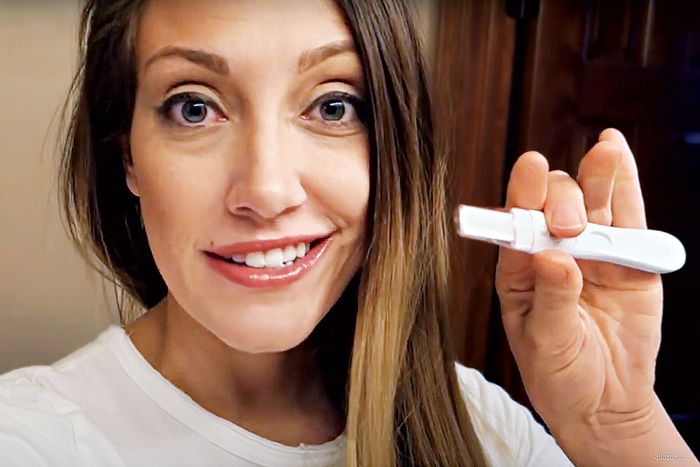
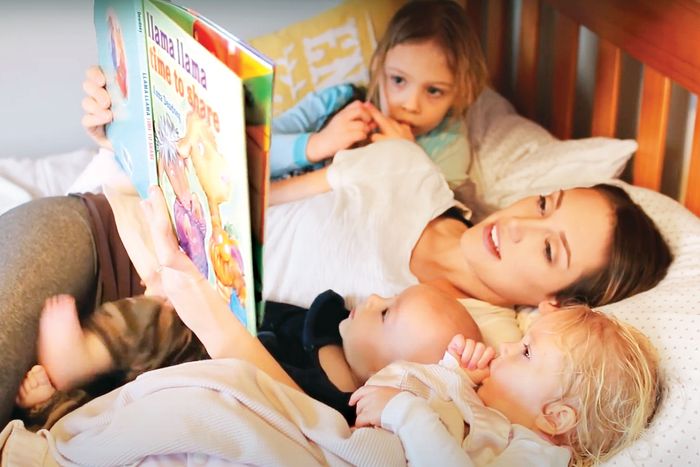

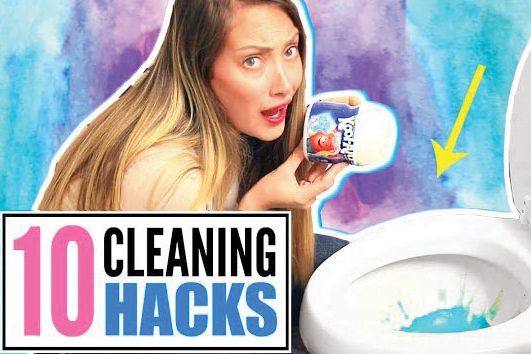
Myka said she’d long wanted to adopt; at one point, she and James talked about having six or seven children, with multiple adoptions, and were specifically interested in a child from Africa. James was more reluctant, she said, and after several conversations, she finally pleaded, “Can you please, please in your heart just consider adoption? Just really genuinely think about it, because it’s really important to me.” He ultimately agreed, and, later in 2016, the couple posted a video announcing their plans to adopt and their intent to take viewers along with them on their “journey.”
Sharing information about a child’s adoption before he or she is in the home is frowned upon by adoption experts. “We don’t advise it. In fact, we ask them specifically not to do it,” says Susan Soonkeum Cox, vice-president of policy and external affairs for Holt International, the agency that has since merged with the World Association for Children and Parents, which the Stauffers said they used to adopt Huxley. Not only can publicizing an adoption jeopardize it, but it’s often seen as playing into the stereotype of white families swooping in to “save” foreign children. It “perpetuates the idea of lesser,” says Cox, who was adopted from Korea. That notion hasn’t stopped other influencers from documenting their process.
Myka began framing the couple’s decision as a step they were being called to take, saying she was “so excited to open our hearts and see what the Good Lord has in store for us” — a sentiment frequently echoed by the often white and Christian community of adoption influencers. Adoption, Myka said, was “something that we really want to be part of our story.” After speaking with adoption agencies, they decided to focus their search on China. International adoptions to the U.S. have dropped to a fraction of what they were a decade and a half ago, as many countries, including China, have revised their protocols. (For the 2019 fiscal year, the U.S. Department of State reported just 2,971 adoptions to the U.S. from other countries, down from almost 23,000 adoptions in 2004.) China still accounts for more adoptions to the U.S. than any other country, but now almost all adoptees from China to the U.S. are toddler age or older, and many have existing health conditions. If the Stauffers adopted from China, they would almost certainly be choosing a child with special needs.
Even then, though, there are two categories of adoption: the country’s LID or “Log-in Date” program, in which the children have more minor needs, and the Special Focus program, in which the children usually have more challenging conditions. Myka said James was initially interested in going the LID route, but for reasons they didn’t make quite clear, they decided to adopt from Special Focus instead. “Let’s just say there’s 100 conditions. Me and my husband were comfortable with 99 of the conditions, so we were very, very open,” Myka told her viewers at the time.
During their search, Myka became active on Facebook groups about adoption. Cynthia Martin, a clinical psychologist who specializes in autism spectrum disorder and is the mother of two adopted daughters from China, says she first encountered Myka in a group specific to parents who either had adopted from China or were interested in doing so. She says Myka “was very vocal” within the group and had reached out to her to ask about various special conditions. Myka also talked about her vlog. “She did ask to be followed, if I wouldn’t mind helping her out, that her family was really trying to get this vlog off the ground,” Martin recalls. “She framed it as wanting to use it as a way to document their adoption process, similarly to how some other families will blog about things. But those are blogs that are generally geared toward family, friends, people in your close community.” The solicitation was off-putting, but Myka persisted. “She would ask families, ‘Can you follow me? Can you go and like my videos?’ ” says Martin. At that point, “myself, as well as other families who I am in touch with through this community, decided, ‘We are going to keep our distance now.’ ”
Myka said she looked through hundreds of photos of children who were available for adoption, but none of them “spoke” to her until she came across the child she and James would rename Huxley. When the agency told her over the phone about suspicions that the child had a brain tumor or cyst, “My heart just stopped. It just stopped. So hard. And I felt crushed,” she said.
The Stauffers took Huxley’s medical file to their physician for review — a step in the adoption process that agencies recommend, according to Cox. When the doctor assessed the imaging, “her optimism went down significantly,” said Myka. “She kind of almost discouraged us from adopting him, saying, ‘This is going to be severe. This is going to be a lot. You know, we don’t know what unknown elements could be.’ ” But Myka wasn’t deterred. “Without a doubt in our minds, we knew, no matter what state he came to us, that we would love him,” she told her subscribers. “If anything, my child is not returnable.”
Myka and James asked viewers to invest not only time in Huxley’s adoption story but money. In one video, they held a fund-raiser asking their audience to donate $5 for puzzle pieces, which, when put together, would reveal a photo of Huxley. (In a video, Myka said they’d raised $1,900; during the investigation conducted by Ohio’s Delaware County Sheriff’s Office, one of the Stauffers told officers they’d raised $800 from a GoFundMe. Either number is a small fraction of their adoption costs, which were over $40,000.)
In October 2017, Myka and James, along with their three biological children, traveled to China to pick up Huxley. The accompanying video, which they called Huxley’s “Gotcha Day” — a term popular on YouTube but criticized by the adoption community — racked up more than 5.5 million views. Myka and James dedicated it “to all the orphans around the world” and set the video to “You Set My World on Fire,” by Sweden’s Loving Caliber, an acoustic track with the lyrics “Just tell me you’ll stay or take me away / I want you for myself every single day.” There is footage of the Stauffers on the plane, Myka applying her makeup at the hotel, and, of course, the family meeting Huxley in person for the first time. The cheerful song plays while Myka and the couple’s biological children warmly give Huxley toys and lollipops. It continues to strum on as Huxley, then only 2 and a half, cries and flails in Myka’s arms, the camera still fixed on him.
James later described the moment as a turning point. “When we went to China to adopt our son Huxley, we had a lot of people from China, from other countries, and even our followers here, in North America, kind of following along with us, and they were getting really revved up,” James said in the 2019 interview. “China definitely was the point where we had a super-loyal fan base following us, and they were always asking, ‘Where’s the next content? Where’s the next piece of this?’ ” he continued. “We weren’t daily at that point. We had slowed down to probably three times a week, and they were asking, ‘Hey, can you do daily? Can you do some more content? We want to see how Huxley’s doing, how the family is getting along.’ It was like, Wow, okay, we have something here, and people are really interested in our journey.”
Huxley quickly became a focus on both Myka’s channel and The Stauffer Life. The couple shared tender moments of Huxley growing closer to his new family: bonding with his siblings, celebrating his first Christmas as a Stauffer, dancing and giggling, nuzzling James, playing with toys. “Huxley went from being the little boy that we adopted to becoming our son,” she told her viewers three months in.
The couple also prided themselves on showing the more challenging side of parenting and adoption. Myka and James continued to post videos about Huxley’s medical prognosis as well as his struggles with the apparent aftereffects of food insecurity (a relatively common issue for adopted and foster children, who may hoard or fixate on food), communication challenges, and meltdowns. Myka spoke regularly about struggling with some of Huxley’s behaviors. There were also on-camera moments that would later concern some viewers: In one video, Huxley appeared with his thumb duct-taped, seemingly to prevent him from sucking it (in the sheriff’s-office report, one of the Stauffers told a deputy he would suck his thumb so raw “he would have blisters”). In another, Myka followed the child with a camera while he cried, asking him, “Are you done fitting?”
In the first year with Huxley, Myka’s channel grew to over 400,000 subscribers, and her brand expanded from family-and-lifestyle vlogger to special-needs-adoption advocate. She started using hashtags popular within the adoption community — and sometimes misused them. Stephanie Drenka, a Dallas-based writer, adoptee, and advocate who used to work with influencers, was dismayed when Myka posted #adopteevoice, a hashtag created by adult adoptees to center adoption stories on those who have experienced it. “She started using it when she was telling the story of Huxley,” Drenka said. “And so it’s not an adoptee voice.” In fact, Huxley struggled to communicate, according to Myka, and in videos appeared to be mostly nonverbal.
The Stauffers’ videos of Huxley granted them entry into a more elite tier of family YouTubers, and soon Myka began attracting sponsors. In June 2018, Myka and James filmed with Kendal and Daniel Rich, whose channel, It’s R Life, has over 1 million subscribers. Kendal and Daniel are the parents of five children, including an adopted son with special needs. Their channel showed what might be in store for the Stauffers if they continued chronicling their children’s lives: Several of the Riches’ videos include thumbnail images of their teen and tween daughters over titles like “Shopping for Her First Bra!”
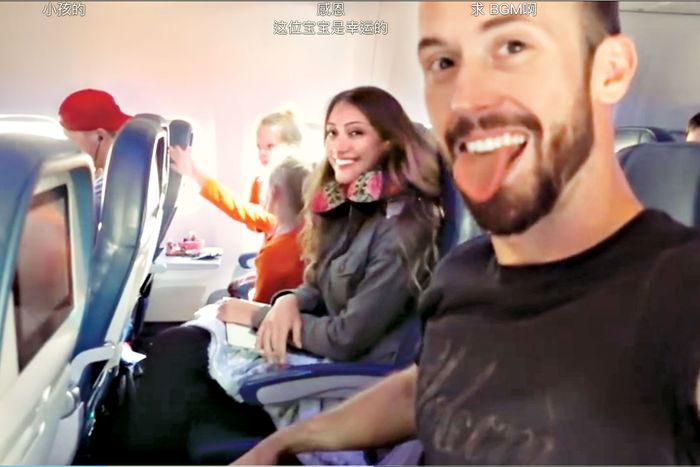
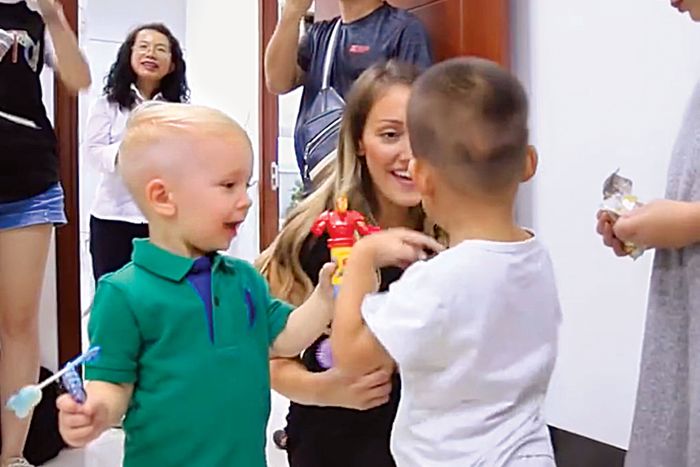
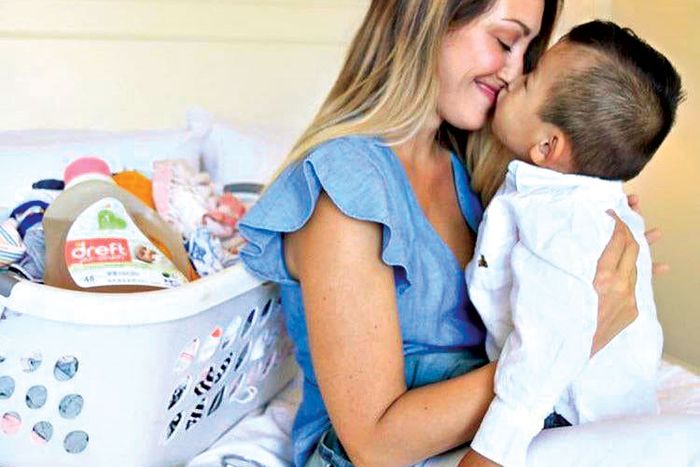
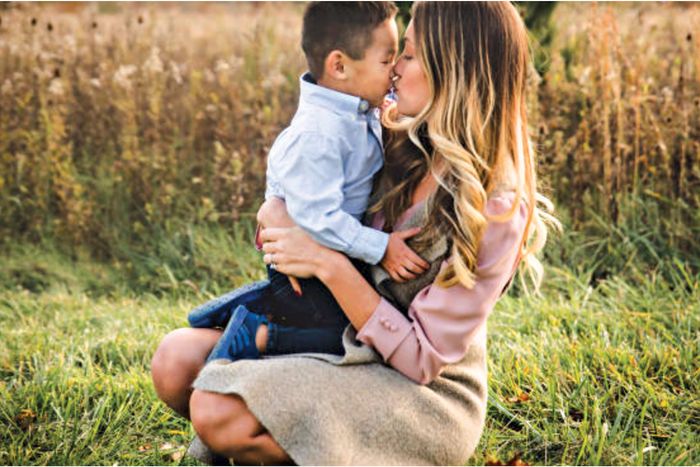
In marketing their videos, the Riches were perhaps simply chasing the same formula other family vloggers were exploiting. Ruby and Kevin Franke, considered in the top tier of family vloggers with 2.44 million subscribers to their channel, 8 Passengers, earned almost 2 million views on a video titled “My First Shave,” which includes an image of their tween daughter on the edge of a bathtub with shaving cream on her bare legs; a video of their son named “Officially Hit PUBERTY,” with a description advertising “voice cracking and sprouting,” has almost 3 million views. (According to YouTube, the videos do not violate the company’s community guidelines.)
Videos with highly dramatic titles about illness and emergencies also tend to perform higher. The Frankes netted 3.1 million views on a video featuring a thumbnail image of one of their children lying on the bathroom floor above the title “sick, But Where’s the toilet?!?” The success of these videos may help explain why the Stauffers once chose to make a ten-minute video of themselves crying in a parked vehicle, their kids in the back seat calling for them, while discussing whether a lump in Myka’s neck was lymphoma. (It wasn’t.)
As the couple’s YouTube profiles grew, so did their lifestyle. In 2018, the Stauffers bought a home in an upscale suburb of Columbus for $670,000, one with multiple fireplaces, a finished basement with a bar, and a great room with a 20-foot ceiling. A Range Rover and Mercedes began showing up in videos.
Myka and James shared their plans to adopt another child. Myka assured viewers that she and James “are definitely going to be doing updates the entire time, filling you in on literally everything” and encouraged them to follow her on Instagram as well for “private deets.” Instead, Myka soon announced that she was pregnant with the couple’s fifth child, sharing footage of her taking a pregnancy test and awaiting the results. She cried tears of joy at the sight of two blue lines and filmed herself sharing the news with James by leading him down a trail of hamburger buns and electric tea lights, getting down on one knee, and asking, “Do you accept this pacifier?”
Only weeks later, the couple appeared in front of the camera again, eyes puffy from a different sort of tears. Huxley, they revealed, had been diagnosed with autism spectrum disorder level three — the most severe form, in which communication challenges can be lifelong. The therapist told them that Huxley’s IQ was below average and that he would very likely never go to college. Myka described the news as “really hard to stomach.”
“You guys knew when we adopted Huxley from China, they told us that he had a brain tumor, and they said that his IQ was completely up to par — no delays and no issues. So when we get all of this news he doesn’t have a brain tumor, which is fantastic, but he does have several issues — ADHD, level-three autism, may live with you for the rest of your life, may never be potty trained. When we heard all of these things, it just hurt. It just hurt,” she said, adding that she’d trusted in God, and he had given her “a bit more than I knew what to do with.” (In China, toddlers are not routinely screened for autism the way they are in the U.S., says Martin. Even here, the average age of diagnosis is about 3 years and one month — older than Huxley was when he was adopted.)
James told viewers there were a lot of challenges they didn’t share on the vlog and that, in China, they’d been told Huxley knew the alphabet and said multiple words already in his native language. “None of that was true,” James said. (Holt International says it’s prohibited from speaking about the specifics of any adoption.) He added they’d “struggled to vlog” because of their son’s behaviors.
Myka doubled down on the point. “We would start to vlog and maybe Huxley will go into a full-blown tantrum, and we don’t know how to parent that tantrum, because it’s just out of control, and then we’re just like, I want to turn the camera off because I’m so sad and I’m not doing a good job,” she said.
They placed Huxley in preschool and 30 hours of in-home therapy a week and continued to record their family’s story. Myka shared their struggles with various parenting publications and maintained that the challenges were worth the rewards. “My son has taught me to love completely and unconditionally, regardless of circumstances and without exceptions,” she wrote for the Bump. The article was accompanied by a photo of Myka gently kissing Huxley in the sunlight, her blonde blowout falling over her shoulders, her son’s small hand holding the lapel of her vest.
As the months went on, however, Huxley began to appear less frequently. The Stauffers attempted to explain why the child wasn’t as prominent. Myka said he was often having meltdowns, and James made a video that addressed why they sometimes treated Huxley differently. Their adopted son went to bed before their other children, he said, not only because he was developmentally younger and needed to fall asleep earlier but because he required extra attention during the day, and this schedule gave James and Myka time to spend with their other children.
The sheriff’s-office report later revealed the extent of the Stauffers’ struggles. It detailed how the couple had hired a full-time caregiver for Huxley — which was “very expensive” — to prevent what authorities say one of the Stauffers described as the child’s “severe aggression” toward their other children. They said they’d tried to get him additional support, including seven months of applied-behavior-analysis therapy, but that the behaviors — throwing toys, removing registers from the floors, and attempting to hit the other children with them — continued to escalate. Several people who had agreed to watch Huxley quit, one of the Stauffers told the investigator, and Huxley’s outbursts were traumatizing for the other kids.
By January of this year, Myka and James decided they needed a break and took a trip to Bali with just their infant son, which they documented on Instagram. In the pictures, they are the image influencers tend to strive for: well traveled, happy, #blessed. Since adopting Huxley, Myka and James’s online success had grown substantially. Total earnings are difficult to estimate, but the Stauffers earned from $4,100 to $66,700 from their three channels in April and May 2020, according to analytics site Social Blade, a number that does not include revenue from sponsorships. Myka had hired a manager to handle all the DMs from companies that wanted to work with her.
After their vacation, Myka’s namesake channel focused on cleaning and organizing, and she began posting on a new money-centric channel, Cash Crush. In March, she used the hashtags #adoptiontrauma and #reactiveattachmentdisorder (also known as RAD, a rare but treatable disorder that can share symptoms with autism) on an Instagram photo of her holding Huxley.
The new channel wasn’t necessarily surprising: Last year, Google began rolling out policy changes affecting family YouTubers, first by disabling comments on content featuring young children — which cut off a crucial line of communication with their audiences — after news outlets reported pedophiles were time-stamping scenes in videos as a virtual Bat-Signal to one another (a child swimming in a bathing suit, for example, or children in the bathtub). In September 2019, the company agreed to pay a $170 million settlement for allegedly violating the Children’s Online Privacy Protection Act — a 1998 law meant to protect children’s personal data online. In a complaint filed by the FTC and the New York State Attorney General’s Office, YouTube was accused of profiting from ads aimed at children under the age of 13 through the use of cookies without their parents’ consent. To comply with the law, YouTube limited the ads on channels and videos specifically aimed at kids. Earlier this year, YouTube deleted 1.4 million videos that violated its child-safety policies. Some family vloggers worried that their content would come under scrutiny next, if not legally, then at least in the eyes of their followers.
Offline that spring, the Stauffers were talking with medical experts and therapists, conversations that would lead them to the possibility of finding a new home for their son. That was never part of the “journey” they had expected to experience, much less share. “There is a part of me that can’t imagine how bad it must have felt to lead to that initial conversation where one of them says to the other one, ‘Maybe it’s not meant to be us,’ ” says Kelly Raudenbush, who adopted her daughter with special needs from China in 2010 and has since co-founded the Sparrow Fund, an organization that supports adoptive and foster parents. “When do you have that conversation where one of you suggests, ‘Maybe we need to say “No more”?’ It’s got to be horrible.”
Followers began asking about the child in the comments on Myka’s Instagram. Eventually the questions morphed from inquisitive to concerned to angry. On May 3, the first post on the anonymous Instagram account Justice for Huxley appeared: “Myka, we are very worried about your son … Deleting IG comments and avoiding questions inquiring about Huxley and his whereabouts is extremely suspicious and worrying. We won’t stop until we have #justiceforhuxley.”
When the Stauffers finally broke their silence in late May, they said they had initially kept quiet because they didn’t want to jeopardize Huxley’s transition to his new family. In their video, Myka said that Huxley was thriving in his new home, that he was happy, and that “his new mommy has medical-professional training and is a very good fit.” But the optics of their situation were fraught. In the middle of a pandemic and a national reckoning over racial injustice, when the president and multiple other right-wing leaders repeatedly referred to the coronavirus as the “kung flu” or “Wuhan flu,” Myka and James were a privileged white couple who’d given away their Chinese son.
They initially tried to address their detractors in the comments section: “Multiple scary things happened inside the home towards our other children, and if these events happened with one of my biological kids, after all the help and after the behaviors we witnessed, sadly we would have no other choice then [sic] to seek help and get their needs met.” They also alleged that Huxley — a preschooler who, in their videos, often signed to communicate basic needs — wanted this decision “100 percent.”
Later on Instagram, Myka apologized for “being so naïve” when she’d started the adoption process. “I was not selective or fully equipped or prepared. I received one day of watching at home online video training,” she wrote.
In adoption message boards, other parents struggling with their adopted children have posted about feeling as though agencies had falsified reports or misled them about the severity of their child’s needs. Experts say that, with intercountry adoption, it’s not that agencies are withholding information — sometimes they simply do not have it. “If a 3-year-old is abandoned, you don’t necessarily know what happened before that,” says Adam Pertman, president and CEO of the National Center on Adoption and Permanency. “Generally speaking, agencies try to get this right and get as much information as they possibly can. That’s partly because of the good work that they want to do and partly because they’ve been sued in the past.”
Still, other adoptive parents have described situations that seem to echo the Stauffers’ sense of hopelessness. In her memoir The Best of Us, author Joyce Maynard describes adopting two girls from Ethiopia and then, just over a year later, placing them with another family whose mother she met during the adoption process. “With an ignorance that staggers me now — ignorance, and some arrogance, no doubt — I had believed my love would be there like an eternal flame, and that this love of mine could fix whatever had been broken in my daughters’ lives.” When this proved not to be the case, that the road to attachment would be a long one, she describes it as “the most profound sense of despair I had ever known.”
Nightlight Christian Adoptions, one of the few adoption agencies that handle dissolutions, places about five children a year whose adoptive parents want to relinquish custody. For families who have decided to dissolve, “it’s extremely emotional, and there can be a lot of guilt and shame,” says Katie England, L.M.S.W., Nightlight’s executive director of domestic-adoption services. In her experience, parents seeking a dissolution often do so about two to three years in, but England believes that, often, if they had reached out earlier, the dissolution might have been prevented. “One of the biggest misconceptions is that dissolutions happen because the child is bad. Nine times out of ten, it is not the child’s behavior. It seems like it’s the child’s behavior, but it’s the child’s behavior triggering something in the family.” (Debbie Riley, CEO of the Center for Adoption Support and Education, says, in her experience, the most common reason for dissolution is that the parents feel incompetent to manage the child’s behaviors.)
Several women have, in recent years, spoken out about dissolving their child’s adoption. Most have faced similar online attacks, including a woman I’ll call Lauren, who ended her son’s adoption after he was diagnosed with a severe medical condition. In her case, she hadn’t agreed to adopt a special-needs child; not until she brought her son home and he began missing key developmental milestones did his medical condition become clear. She was a single mother who had adopted in her late 30s because she didn’t want to miss out on the opportunity to become a mom. But the child’s condition was more than she could handle.
“I was so exhausted,” she says. “I was practically living in the hospital with him, and we had been in and out of there for six months. I couldn’t function anymore.
I couldn’t work. He had seizures; they didn’t know what was happening. It felt like his prognosis was pretty poor and he was going to need around-the-clock care.” She feared losing her job and her house. “It’s an awkward thing to say, but I thought to myself, This is not the reason I entered into adoption, to have this kind of thing happen. You go into it so optimistic.”
The hardest part, she says, was losing friends. “They think what I have done is appalling and horrific.” In the aftermath of a dissolution, she adds, “you go through this massive loss of grieving your child and then you realize some of your friends have removed you from social media, that they have just dumped you.”
Lauren initially decided to speak publicly about her experience to help other adoptive parents who might be struggling and to encourage them to get support. Though she received some compassionate messages, the insults drowned them out. Most of the cruelest comments were from women. “I think fear is behind the hatred,” she says. “Those women — and it will be women — they don’t want to admit that they would have crumbled. They feel like they would have had the mental willpower to have coped.”
In the Stauffers’ case, most of the vitriol was aimed at Myka. One Instagram account, Cancel Myka Stauffer, which goes by the handle @mykastauffer.liar, has more than 11,000 followers. An online petition with more than 154,000 supporters demanded that Myka’s monetized videos with Huxley be removed from YouTube. Followers appeared angry not only on behalf of Huxley but also because Myka had committed the ultimate influencer sin: ghosting on those who’d become invested in her story right when the plot twisted.
After their announcement, Myka changed her social-media profiles to reflect that she is the mother of four kids, not five, and then deleted content featuring Huxley. The Stauffer Life disappeared as well, including the couple’s seven-minute tearful plea. Myka hasn’t returned to YouTube, nor has she posted on her Instagram since her apology. The brands she partnered with have fled — and even if they hadn’t, there’s no new content to sponsor. James, however, is back to sharing videos on Stauffer Garage. His followers aren’t there for his family life. They want to see cars being detailed.
The online outrage eventually moved offline. By June 1, local authorities say they had received three tips from people who said they did not personally know the Stauffers, recounting some of what was being discussed on social media — including concerns that Huxley was mistreated. After the sheriff’s office opened its investigation, deputies met with the Stauffers in person. One of the Stauffers explained that the duct tape was “just a bad judgment call” and they should have purchased a specific device meant to prevent the child from sucking his thumb so vigorously. They detailed some of what had led them to dissolve the adoption, and authorities looked into Huxley’s second adoption — which they deemed to have been conducted legally. One of the Stauffers also said they had received death threats, including one about slitting their children’s throats, and told authorities that Huxley’s new family feared for its safety as well.
When deputies met with Huxley and his new mother, they reported walking into an office to find the child “sitting on her lap and smiling” and that he “appeared to be very happy and well taken care of.” The investigation was closed, but the sheriff’s office says it will continue to check in on the Stauffers.
Of course, just because Huxley is no longer living a documented, monetized existence doesn’t mean his story has lost its currency. News vloggers, drama vloggers, beauty vloggers, psych vloggers, family vloggers have all weighed in. Even the Rich family, who’d filmed with the Stauffers in 2018, jumped on the bandwagon, posting a key-word-packed video titled “Why I Will Never Give Up My Special Needs Adopted Child! Our response to Myka Stauffer.”
Katie Paulson, who has a special-needs son and has covered parenting scandals in the past on her YouTube channel, Without a Crystal Ball, posted her first two videos about the Stauffers on May 27; combined, they have reached over 385,000 views.
“I don’t really think I understood the magnitude that people would be interested in this story,” she says, “nor did I understand that people would be as outraged as they were.” She’s since shared at least 20 more videos about the Stauffers.
Paulson, like other YouTubers I spoke with, thinks Myka has a shot at a second chance as an influencer. “Support can be quiet,” she says. “Myka still has over 600,000 subscribers. Could she come back? Yes, 100 percent. Would she have people that would still support her? Yes, 100 percent. Would her backlash be ridiculous? A million percent. She would have to decide for herself, Am I willing to face the criticism?”
For now, Myka and James remain quiet, perhaps sensing what any good YouTuber knows — that outrage can be lucrative online, but it also moves quickly toward other targets. By late July, as I interviewed several YouTubers about the Stauffers, another scandal had already taken hold, this time about teen influencer Danielle Cohn. “If you’re willing to go down the Danielle Cohn wormhole, it’s crazy,” one of them told me. Then, as we got off the phone, he went to go make a video about it.
*This article appears in the August 17, 2020, issue of New York Magazine. Subscribe Now!


